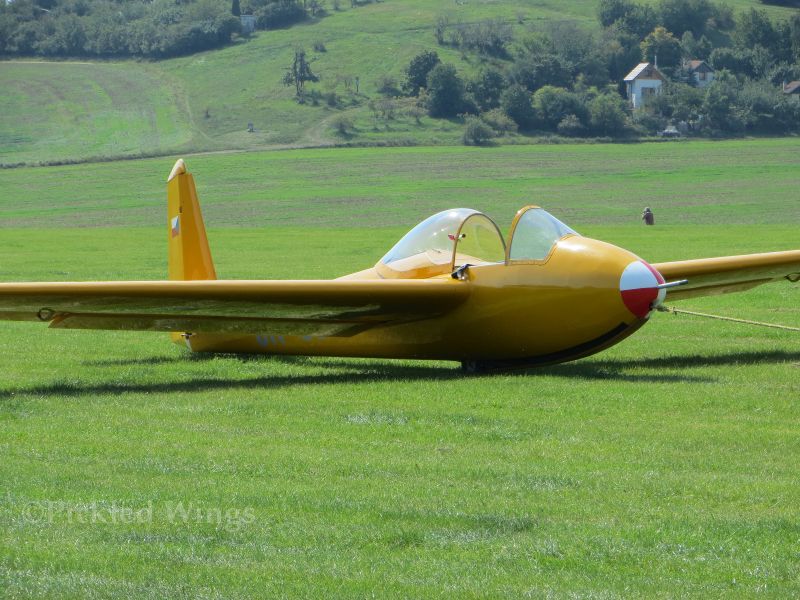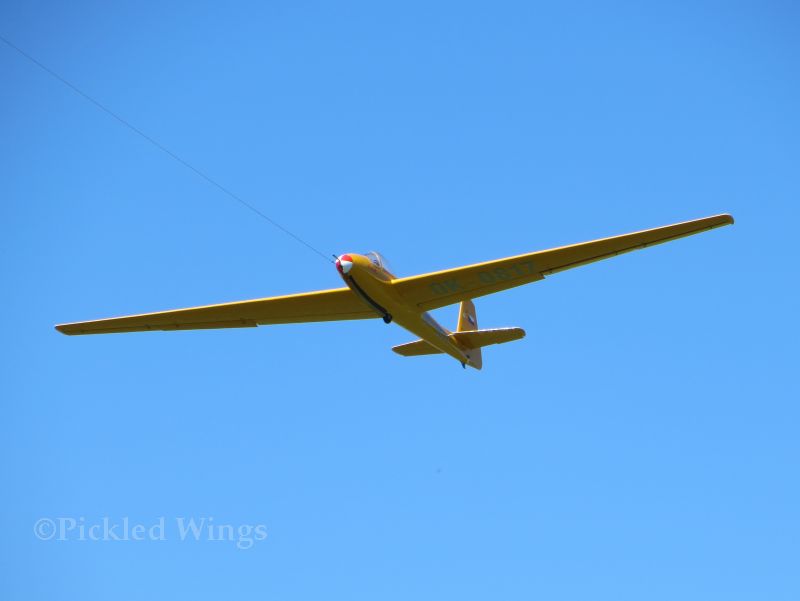Of Proud Pedigree
Established in Prague by the Czechoslovak Defense Ministry in 1918 for the purpose of repairing aircraft of the fledgling Czechoslovak air force, Letov was the first Czech aircraft company.
The company is credited with the design and production of the first indigenous Czech military aircraft, the Š-1 surveillance biplane, which first flew in 1920.
The company performed very strongly in the interwar period, producing a number of aircraft models in a wide variety of categories, both civil and military. As with all Czechoslovak companies, Letov spent the Second World War forced into the service of Hitler’s Germany. In this period of time, they served as repair depot for Luftwaffe aircraft and production site for military variants of the Junkers Ju 290.
The company briefly returned to making its own aircraft in the late 1940s, the LF-107 Luňák glider being the most significant of the company’s designs in that period.
From the start of the 1950s to the present, the company has focused on building components and structures for a number of other manufacturer’s aircraft.
Since 2000, Letov has been a subsidiary of French based Groupe Latecoere. Today, Letov makes components and structures for civilian aircraft from Airbus, Dassault and Embraer.
First flown in 1948, the Luňák was one of the last complete aircraft that Letov produced before being moved into construction of components for others.
Let’s spend some time with the LF-107 Luňák:
Acrobatics Above All
For a period of approximately ten years between the mid 1940s and mid 1950s, design and production of sailplanes enjoyed some popularity among several Czech aircraft companies. A number of those designs found great success internationally. The most recognised of Czech sailplanes from this period is the Let L-13 Blaník from 1956.
Letov’s LF-107 Luňák, which first flew in 1948, was a sleek, single seat glider of largely plywood construction that was designed as an aerobatics specialist suitable for both solo and formation performances as well as aerobatic training.
Design of the aircraft was started in 1947 by a team overseen by chief engineer, Vladimír Štros. The aircraft was designed with the intent that it could exceed the aerobatic abilities of the German made DFS Habicht sailplane which debuted in 1936 and was well respected in competitive circles.
Because of the Luňák’s projected high performance, Letov was able to engage the interest and support of the Czechoslovak military at a very early design stage. The air force was looking for a high performance sailplane with which they could test the fitness of their fighter pilots in aerobatics.
The prototype showed very good qualities during its maiden flight in June of 1948. Test pilot, Jan Anderle, reported the aircraft and its performance to be flawless during that flight. A second flight was performed the following month in front of delegates from the ministries of defense and transport as well as a number of military and civilian pilots. On that flight, Anderle put the prototype through a series of aerobatic figures that demonstrated well the agility and speed of the aircraft as well as the robustness of the design. Authorisation for series production of the aircraft was given shortly after this second flight.
Even before production began, the Luňák prototype was catching eyes internationally. In 1948 and 1949, it appeared at competitions in Poland and Switzerland and turned many heads with all aspects of its design and flight.
While Letov had envisioned a production run of around 200 of the type, rising Cold War tensions led to only 75 Luňáks being made in total before the company was ordered to cease production and was charged with producing components and structures for other aircraft companies who were producing Soviet designed MiG-15, MiG-19 and MiG-21 fighter aircraft for the Czechoslovak military.
Aside of the baseline LF-107 model for civilian use, a small number with simplifications made to the design were built for the Czechoslovak military and designated VT-7. Additionally, a derivative of the LF-107 known as the XLF-207 Laminar was built to experiment with laminar flow wings and was one of the first sailplanes to be equipped with them.
The Kite Aloft
The word, luňák, translates into English as “kite”. Kites are predatory birds known for their mastery of both soaring and agile flight; they are also known for bursts of high speed when diving on prey. It was a very appropriate name for an aerobatics sailplane that had a maximum speed of 300 kilometres per hour.
The aircraft’s agility and speed led it to be nicknamed “Engineless Fighter” and similar by some people.
From the point of view of the experienced pilot, there was a lot to like in the Luňák beyond the aforementioned agility and speed.
The cockpit was spacious and the fighter style bubble canopy that covered it gave the pilot an excellent view all around the aircraft. In the style of fighter aircraft of the day, the canopy opened by sliding backward. This feature allowed the aircraft to be flown with the canopy open if the pilot wished.
The Luňák was known for being very responsive on the controls and , in spite of its aerobatic design, was appreciated for being quite stable and controlable in most aspects of flight.
Owing to its aerobatic optimised features and single seat cockpit, the Luňák was not considered a suitable aircraft for less experienced pilots.
In spite of the small number produced, the Luňák found some popularity outside of its mother country. Small numbers were exported to Bulgaria, Hungary, Poland and Romania. Outside of former Eastern Bloc countries, examples of the type are known to have flown in America, Germany, Switzerland and the UK.
By the early 1970s, the arrival of more modern and efficient sailplane designs resulted in a majority of Luňáks being placed in storage or being destroyed in one way or another after they were replaced with newer types. During the 1990s, a renewed interest in the type and vintage sailplanes saw some Luňáks restored to airworthy status.
It is perhaps the best testament to the type’s qualities that one of the world’s few remaining Luňáks won the British national aerobatics championships in 1999, 2000 and 2001.
The Luňák Today
With a production total of less than one hundred, it should perhaps come as no surprise that there are only a very small handful of Luňáks left in the world regardless of if they are in museums or airworthy.
It would appear, as of early 2018, that the fewer than ten remaining airworthy examples of the type are to be found in the Czech Republic, Germany, Great Britain and Slovakia. It would also appear that very few made it into museums, so your chances of seeing a Luňák in any form could be very slim indeed.
There isn’t much English language information out there about the Luňák. However, these Czech language links responded acceptably to online translator functions and can give you some further reading:
Article at pilotinfo.cz
Article at idnes.cz
This link to a Swiss page gives some interesting details about similarities between the Luňák and a Swiss glider design of the same period:
Article at sagach.ch
This link will take you to a page about the Luňák that made it to America:
Article at museumofflight.org



